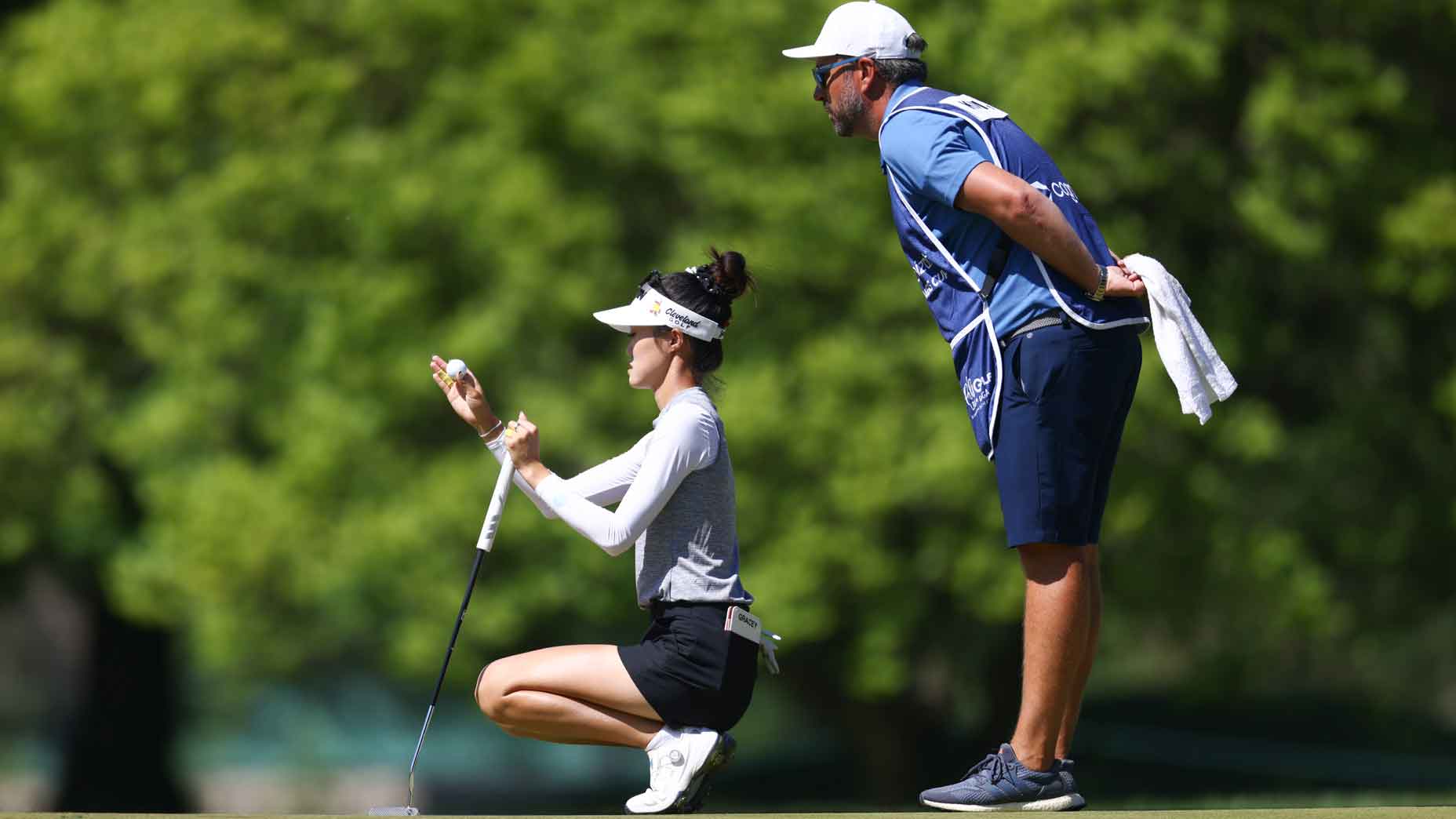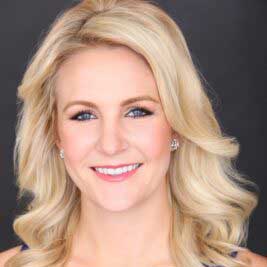Want to dial in your speed on the greens? Try closing your eyes, LPGA pro says.
Getty Images
“Keep your head down” and “Watch yourself hit the ball!” are two common pieces of advice that just about every golfer has likely received over the course of their playing careers. And while this guidance is well-meaning, sometimes it’s not what your game needs.
In the latest episode of Warming Up, for example, U.S. Open champion Bryson DeChambeau, says he doesn’t even see the golf ball when he’s hitting a shot. He’s feeling what his body is doing.
Jordan Spieth is another player who, when putting, often prefers to look at the hole, not the ball.
Of course, these are two of the best players in the world, so it’s easy to assume that their methods wouldn’t be applicable to recreational players. But if you’re looking to improve your game on the green, LPGA pro Emma Talley says there’s an even more drastic step you can take: closing your eyes during the stroke.
Wait, what?!
It’s true. The 2013 U.S. Women’s Amateur champion says its a method she not only uses in practice, but also in competition, most notably during her 2015 NCAA Division I Women’s Championship victory.
“I closed my eyes on every putt,” she said on the range at the LPGA’s Ford Championship earlier this year. “Every single putt. The last putt, a six-footer, right-to-left. I closed my eyes. And it went in.”
Talley says closing her eyes is a method she still employs sometimes, especially when she feels nervous.
“You have to trust yourself at that point,” she said. “Like, you’re not looking at your putter. I think everyone thinks us professional golfers, yeah, we practice way more than you guys, but we still do this stupid crap, like looking at our stroke and thinking about crazy stuff. But it’s all about, like, we know how to control that, whereas amateurs don’t. But if you know the reason why you’re doing it, you can fix it way easier.”
So how does closing your eyes actually benefit your putting? Talley said it’s really helpful when trying to dial in your speed.
“I do three balls, closing my eyes, three balls looking at the hole, and three balls naturally,” Talley says of her practice routine. “It’s all about training your brain. Because we go from different speeds every week, so it’s really hard to get the speed of the greens correct.
“[My coach Gareth Raflewski] used to be an engineer and now he’s a golf teacher and he talks a lot about the senses of the game,” Talley continued. “And by doing those three things, you’re teaching different parts of the brain about the speed. And so it’s been so helpful for me in my golf game. I’ve actually told a lot of people that and they love it too.”
Next time you’re on the practice green, take Talley’s advice to start dialing in your own speed. It’s worth a try!



